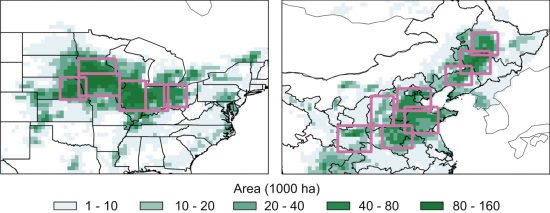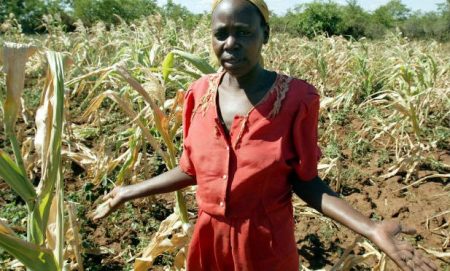July 16, 2017 – Two days ago I wrote about declining aquifers in the breadbaskets of the world with a particular focus on the vulnerability of India and Pakistan because of overdrawn water from underground sources beneath the Punjab. Today I relate the latest research from British Met Office scientists who have modeled climate change and extreme weather events that could prove disastrous for vulnerable world populations.
In a paper entitled, “Using climate model simulations to assess the current climate risk to maize production,” published in Environmental Research Letters, Volume 12, Number 5, Met Office researchers Chris Kent, Edward Pope, Vikki Thompson, Kirsty Lewis, Adam Scaife and Nick Dunstone describe the results of advanced climate modelling focused on maize, a critical crop for global food security.
Based on observed historical data and present day climate analysis that looks at stresses to maize, the researchers applied 1,400 simulations to attempt to quantify the future risk to the two principal maize growing areas of the planet, the United States and China. What the simulations predicted was a potential “multi-breadbasket failure” from “climate-related maize shocks.” They estimated the likelihood of a double whammy to these important maize growing areas as increasing at a rate of 6% per decade based on future climate models and forecasts.
Chris Kent, the lead author of the study, states in an interview. “This is the first time we have been able to quantify the risk. It hasn’t been observed in the last 30 years, but the indications are that it is possible in the current climate….The impact would be felt at a global scale.”
Maize or corn, the name we give it here in North America, is along with rice, wheat, and soybeans, represent the world’s staple crops feeding most of our global population. The United Nations Food and Agriculture Organization estimates that maize, rice, and wheat make up 51% of all the calories consumed by humans on the planet.
The Met Office risk models looked at world production of maize estimated at 1 billion tons in 2014. Of that total, 360 million tons were produced in the United States, and 215 million in China. Extreme weather events impacting either of these two nations or both within a single growing season would be the feared double whammy.

In 2016, Africa was victimized by a major maize crop failure brought on by a drought that impacted 50 million. It marked the second year of a drought that affected crops in Central and East Africa. Malawi, Mozambique, Lesotho, Zimbabwe, Namibia, Madagascar, Angola, Swaziland, Botswana, Kenya, Somalia, Ethiopia, South Sudan and the Democratic Republic of the Congo were all impacted. Nearly 31 million faced near starvation. Imagine if a similar failure happened in China, the United States or both. Instead of 31 million, the impact would be felt by hundreds of millions.
The Met Office models and data showed that such an occurrence is an increasing risk. States Kirsty Lewis, a co-author of the study and Science Manager at the Met Office, “We have found that we are not as resilient as we thought when it comes to crop growing…..We have to understand the risks we face or there is a real danger we could get caught out.” The Met Office is now working cooperatively with researchers in China to better understand that country’s growing climate risks on agricultural production.
















